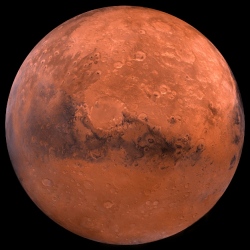
Ever since NASA’s Curiosity rover made its historic landing inside Mars’ Gale Crater, its study of the composition of rocks in the area has led researchers to the conclusion that life could’ve been present at some point. Studies done by other rovers have also arrived at a similar conclusion, with evidence suggesting Mars had a “wet era”
A recent discovery supports these claims. The Curiosity rover’s study of different rocks over the Gale Crater’s elevational range of about 200 meters (650 ft) covers a timespan of roughly tens of millions to hundreds of millions of years. Throughout this period, the environment in the crater, which supposedly cradled an ancient Martian lake, was continually changing, but not enough to preclude life from existing.
The newest evidence of this ancient life on Mars is Curiosity’s discovery of boron, marking the first time that this element has been found on the Red Planet.
“We are seeing chemical complexity indicating a long, interactive history with the water. The more complicated the chemistry is, the better it is for habitability,” John Grotzinger, Curiosity team member and geologist at the California Institute of Technology in Pasadena, explained in a press release. “The boron, hematite, and clay minerals underline the mobility of elements and electrons, and that is good for life.”
